The Samsung Galaxy S7 & S7 Edge Review, Part 1
by Joshua Ho on March 8, 2016 9:00 AM ESTGPU Performance
On the GPU side of things, Qualcomm's Snapdragon 820 is equipped with the Adreno 530 clocked at 624 MHz. In order to see how it performs, we ran it through our standard 2015 suite. In the future, we should be able to discuss how the Galaxy S7 performs in the context of our new benchmark suite as we test more devices on our new suite to determine relative performance.
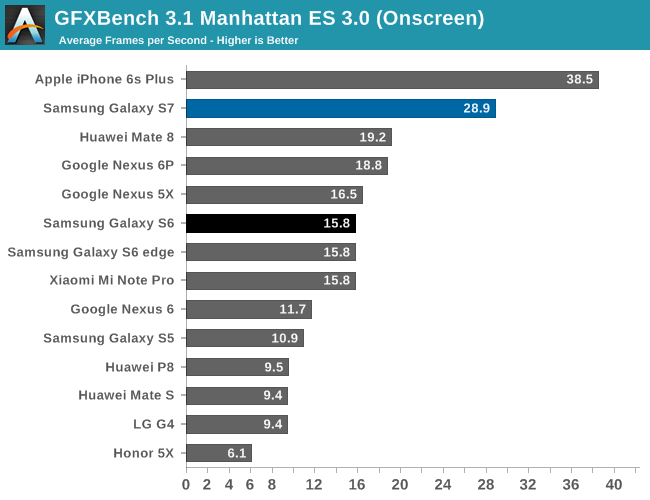

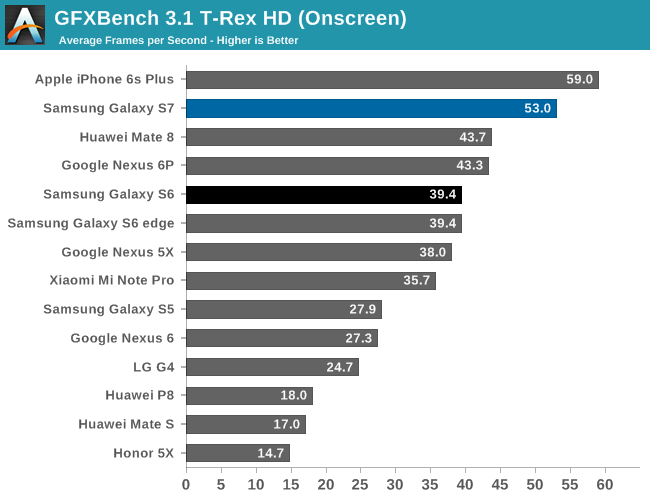
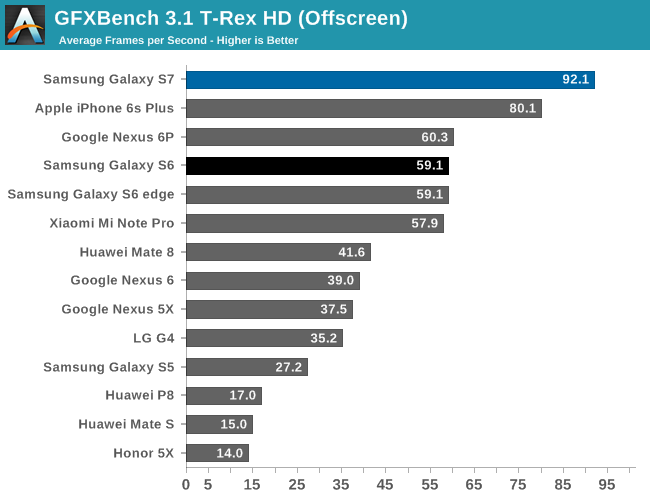
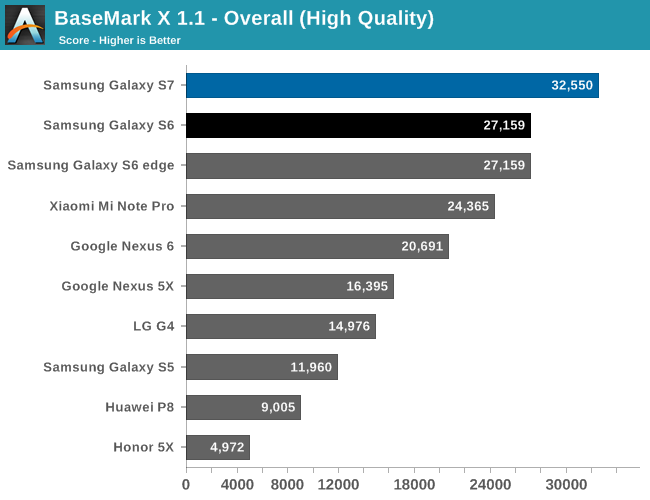

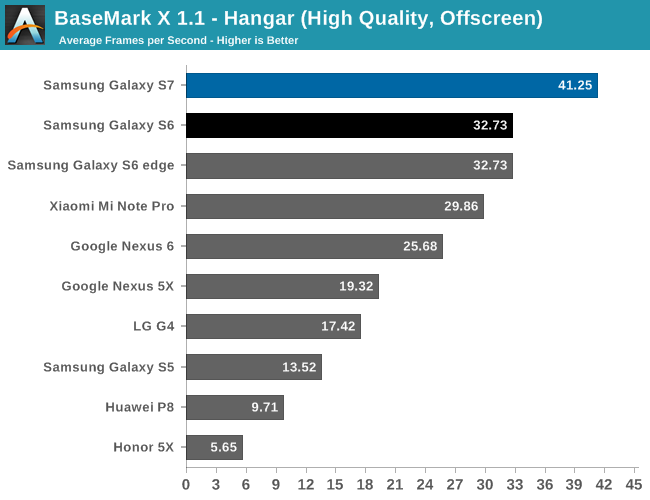
At a high level, GPU performance appears to be mostly unchanged when comparing the Galaxy S7 to the Snapdragon 820 MDP. Performance in general is quite favorable assuming that the render resolution doesn't exceed 2560x1440.
Overall, the Adreno 530 is clearly one of the best GPUs you can get in a mobile device today. The Kirin 950's GPU really falls short in comparison. One could argue that turbo frequencies in a GPU don't make a lot of sense, but given that mobile gaming workloads can be quite bursty in nature and that gaming sessions tend to be quite short I would argue that having a GPU that can achieve significant levels of overdrive performance makes a lot of sense. The A9 is comparable if you consider the resolution of iOS devices, but when looking at the off-screen results the Adreno 530 pulls away. Of course, the real question now is how the Adreno 530 compares to the Exynos 8890's GPU in the international Galaxy S7, but that's a question that will have to be left for another day.










202 Comments
View All Comments
Bluetooth - Wednesday, March 16, 2016 - link
In the NAND storage tests are some phones using decryption and other not?qasdfdsaq - Wednesday, March 23, 2016 - link
As far as I can tell, the S7 comes encrypted out of the box and you cannot turn encryption off, so FDE is its natural and only state.jerrylzy - Wednesday, March 16, 2016 - link
ARMv8 has AES instructions built-in, like AESE (ByteSub, ShiftRows, AddRoundKeys) AESMC (MixColumns), etc.. With this kind of hardware support FDE should not affect much of the NAND performance if Samsung actually uses them.tipoo - Wednesday, March 16, 2016 - link
Ars Technica got something near 100MB/s for random 4K reads, sup with that?jacksonjacksona - Thursday, March 17, 2016 - link
( www).(ajkobeshoes).(com )christian louboutin
jordan shoes $60-
handbag
AF tank woman
puma slipper woman
=====
( www).(ajkobeshoes).(com )
SirKronan - Saturday, April 30, 2016 - link
Please remove spammer...XmppTextingBloodsport - Saturday, March 19, 2016 - link
Good job ignoring both the audio subsystem and antennae functionality of this PHONE.XmppTextingBloodsport - Saturday, March 19, 2016 - link
All LTE phone reviews need an eye to SIP (volte) and their respective audio paths and or black magic deviationsguyhindle - Monday, March 21, 2016 - link
I just *can't* bring myself to drop > £600 on a handset that will last < 3 yearsmaxnix - Wednesday, March 23, 2016 - link
Dumb Comment Time: But one has to note that if Samsung had not abandoned field replaceable batteries, Page one would be a mere curiosity.Coincidentally, I cannot find a review for the original Note Edge. Did AnandTech whiff on this?